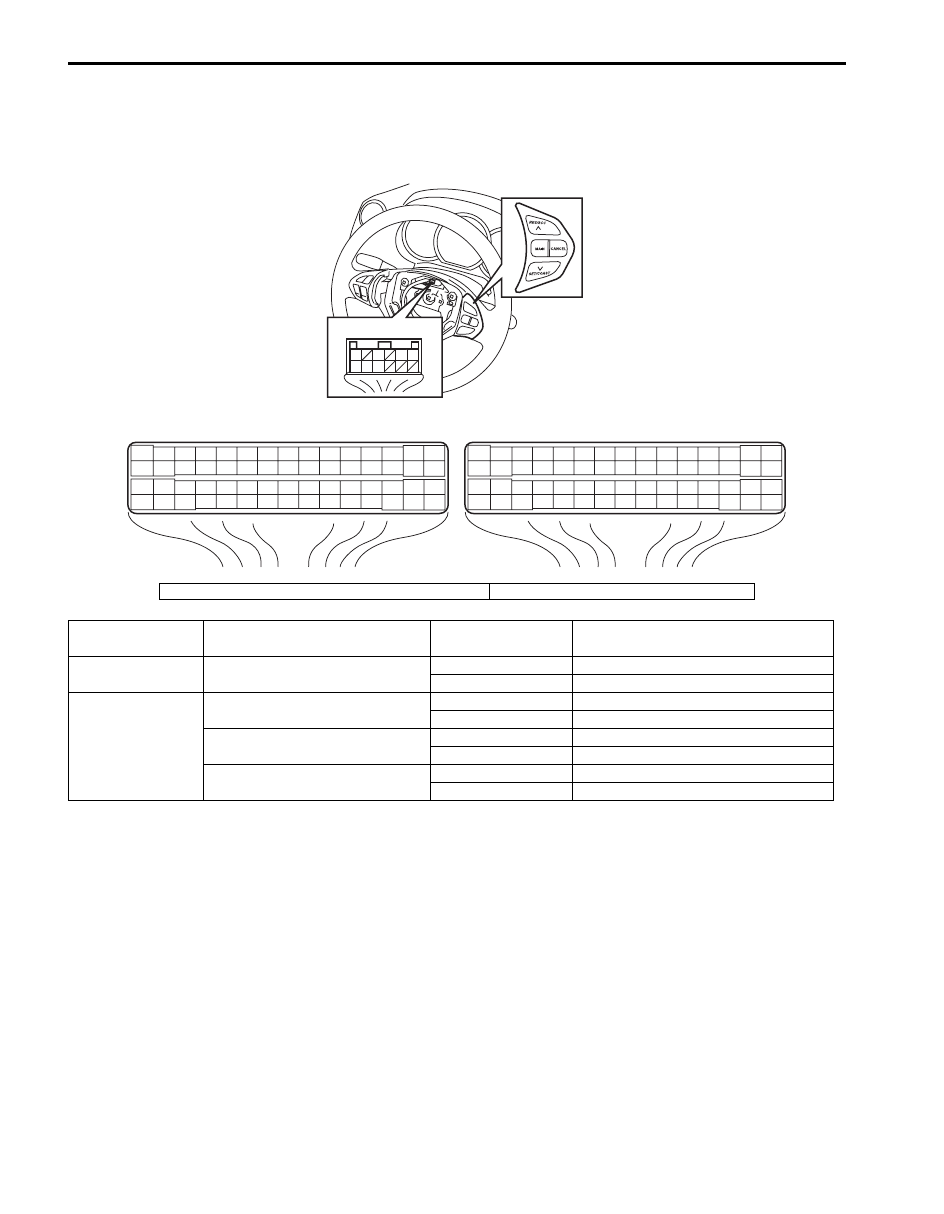Suzuki Grand Vitara JB416 / JB420. Manual - part 408

10A-7 Cruise Control System:
Resistance Check
1) Remove driver air bag (inflator) module from steering wheel referring to “Driver Air Bag (Inflator) Module Removal
and Installation in Section 8B”.
2) Measure resistance between the following terminals with ECM connector disconnected.
E23
C37
3
4
18
19
5
6
7
10
11
17
20
47
46
49
50
51
21
22
52
16
25
9
24
14
29
55
57
54 53
59
60
58
2
26
27
28
15
30
56
48
32
31
34
35
36
37
40
42
39 38
44
45
43
41
33
1
12
13
23
8
3
4
18
19
5
6
7
10
11
17
20
47
46
49
50
51
21
22
52
16
25
9
24
14
29
55
57
54 53
59
60
58
2
26
27
28
15
30
56
48
32
31
34
35
36
37
40
42
39 38
44
45
43
41
33
1
12
13
23
8
1
5
3
6
7 8 9
G54
[A]
[B]
I5JB0AA10005-03
[A]: Cruise control switch connector (viewed from harness side)
[B]: ECM connector (viewed from harness side)
Terminals
Circuit
Standard
Resistance
Condition
G54-1 – E23-6
MAIN switch circuit
No continuity
MAIN switch is not pressed.
About 1
Ω
MAIN switch is pressed.
E23-21 – E23-22
CANCEL switch circuit
No continuity
CANCEL switch is not pressed.
About 1.5
Ω
CANCEL switch is pressed.
RES/ACC switch circuit
No continuity
RES/ACC switch is not pressed.
About 911
Ω
RES/ACC switch is pressed.
SET/COAST switch circuit
No continuity
SET/COAST switch is not pressed.
About 222
Ω
SET/COAST switch is pressed.